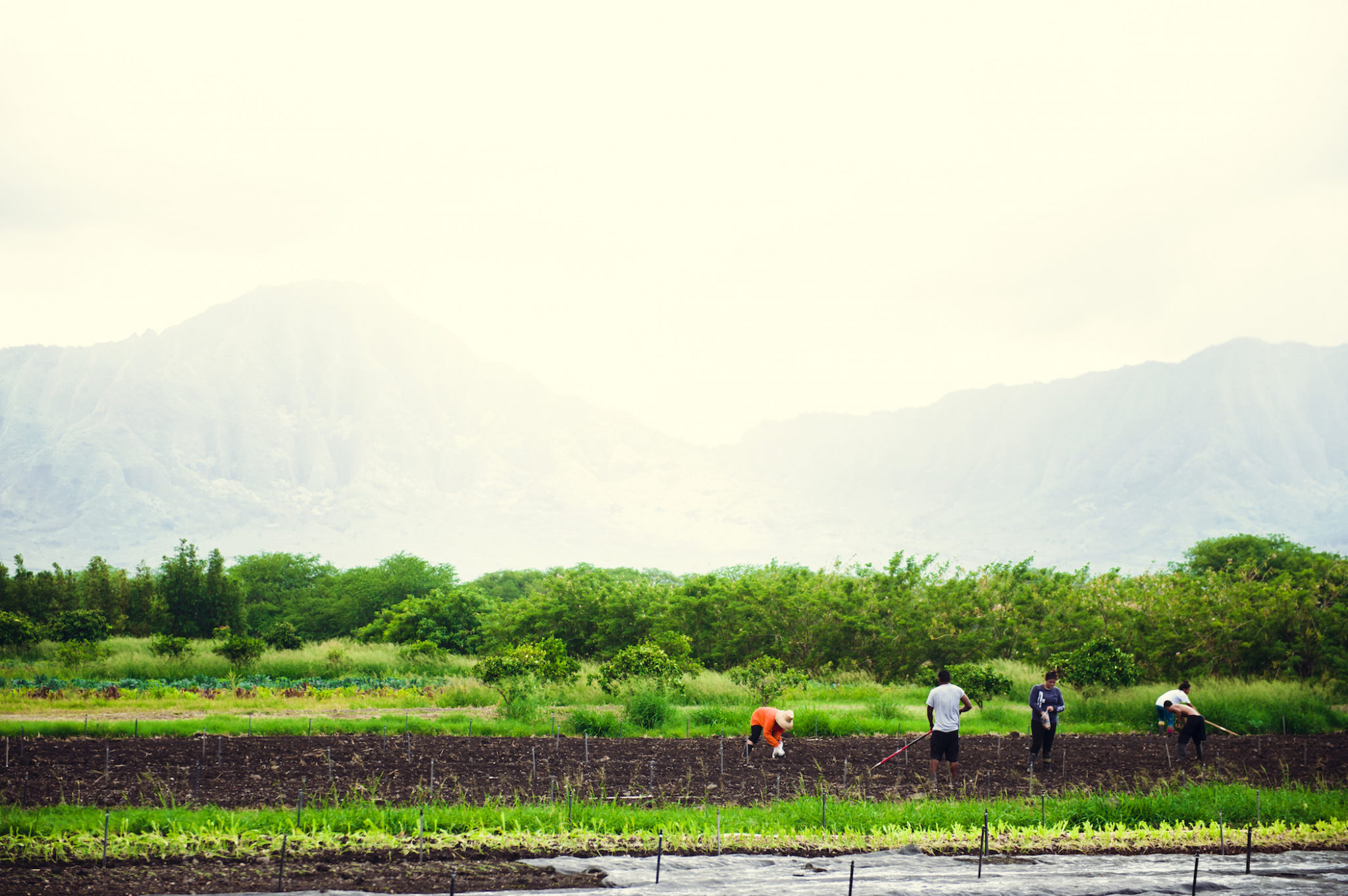Experience a different side of Hawai‘i with these unique voluntour opportunities.
Text by Kelli Gratz
Images by John Hook & Jonas Maon
Planting trees in a nature preserve, harvesting vegetables, or restoring a Native Hawaiian fishpond might not seem the ideal way to spend your dream vacation in paradise, but as it turns out, volunteer travelers are able to integrate into an unfamiliar location in a way traditional tourists seldom can. In Hawaiian, there is a saying, “‘O ka ha o ka ‘aina ke ola o ka po‘e,” which translates to “The breath of the land is the life of its people.” Volunteer-touring, or voluntouring for short, can help travelers experience Hawai‘i from a homegrown perspective while giving back to the culture that hosts them.
O‘ahu
MA‘O Organic Farms: Rooted in their desire to grow organic food locally and support Hawai‘i’s youth, Gary Maunakea-Forth and his wife, Kukui, started MA‘O Organic Farms in 2001 (MA‘O is an acronym for Mala Ai ‘Opio, which translates to “youth garden”) as a way to reach out to at-risk youth in Wai‘anae. Since then, their youth leadership training program has helped hundreds of students obtain college educations, as well as inspired many to become farmers. Along with building and raising a community through agricultural activity, they’ve also raised awareness of the current instability of Hawai‘i’s food and economic security through an authentic farm-to-table experience.
Volunteer Tip: G.I.V.E. (Get Involved and Volunteer Environmentally) back with MA‘O’s community work days every last Saturday of the month. Plant, weed, harvest, and talk story with local residents while learning about the deep connection between the land, the food, and the people of Hawai‘i. maoorganicfarms.org
Ho‘olu ‘Aina Nature Preserve: Imagine 99 acres of beautiful, lush forest and agricultural terraces in a mountain Valley. Then imagine a small community coming together to restore life to the area, planting banana trees, harvesting kalo (taro), weeding, and learning about the ahupua‘a (traditional watershed system) of the area. It’s an inspiring thought.
Volunteer Tip: Community work days take place every Wednesday and third Saturday of the month. Look forward to benefitting from the knowledge of Pacific Island traditions in agroforestry. hooluaina.com
He‘eia Fishpond: Ancient Hawaiians developed their own, unique system of fishpond aquaculture believed to have helped feed the population of up to one million people who lived in the pre-contact Hawaiian Islands. Nowhere else in the world can you find the variety or quantity of loko i‘a (fishponds). Because they are located where land meets sea, fishponds catch everything that flows downstream, from nutrients to pollutants, making them an important way to judge the health of the land as well as of the oceans. Located in He‘eia Uli on the island of O‘ahu, the He‘eia Fishpond is the longest in the islands, measuring 1.3 miles.
Volunteer Tip: Help rebuild the fishpond by repairing the kuapa (fishpond wall) using pohaku pele (volcanic rock) and ko‘a (coral) or by removing invasive mangroves and seaweed in the area. Community work days include Friday mornings, and every second and fourth Saturday of the month. paepaeoheeia.com
Maui
Leeward Haleakala Watershed Restoration Partnership (LHWRP): Anyone can drive up Haleakala or hike through the volcano’s crater, but not everyone can help to preserve it. This nonprofit is working to defend and restore the 7,500 acres of native upland watershed forests found along the slopes of Maui’s tallest volcano.
Volunteer Tip: Sign up for one of LHWRP’s monthly planting days to help restore koa and ‘ohia forests, which are home to native bird habitats as well as rare and endangered plants. lhwrp.org
Kaua‘i
Limahuli Garden and Preserve: This beautiful 1,000-acre preserve on the north shore of Kaua‘i aims to perpetuate traditional knowledge of native plant conservation and habitat restoration. Take a walk through its Plantation Era garden and along Limahuli Stream, one of the last pristine waterways left in the islands. When you get to work, you will learn about Native Hawaiian species and ecosystems, and be immersed in Hawaiian culture.
Volunteer Tip: Inquire with the National Tropical Botanical Garden about its “Vacation and Volunteer” option. This way, you’ll be placed in the area that you’re most excited about, from nurturing plants in the nursery to assisting with arts and crafts. ntbg.org/donate/volunteer.php

